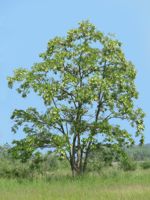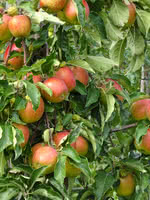Mon-Fri 9am - 5pm Mountain time
Black Locust vs Harcourt Apple
Robinia pseudoacacia
Malus Harcourt
Black Locust is an attractive tree. Its distinctive leaves are made of about a dozen bright green leaflets. It also notable for its fragrant white flowers, which smell of citrus.
Black Locust can grow in many situations, but prefers dry areas with lots of sun. It is robust and is an excellent choice for establishing shade in dry, open areas.
Important note: Much of the Black Locust is toxic to humans and livestock, including seeds, bark, and leaves.
Harcourt Apple is a cold-hardy variety developed by the University of Alberta. In spring, it produces fragrant white blossoms shaded with pink. The medium-sized apples mature from late summer into fall, featuring red-striped skin with greenish-yellow highlights. The fruit is crisp and juicy, with a mild, pleasant flavour. They are well-suited for fresh eating, baking, and preserves.
For fruit production, cross-pollination is required. Apples need to be planted with another Apple or Crab Apple variety.
Note: We do not ship grafted apples to BC due to regulatory restrictions from the Canadian Food Inspection Agency.

